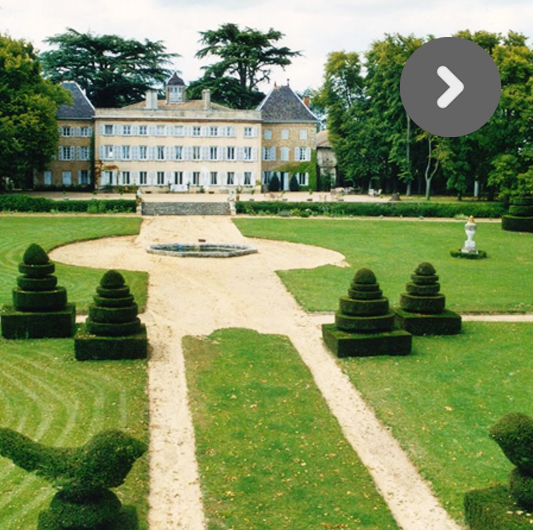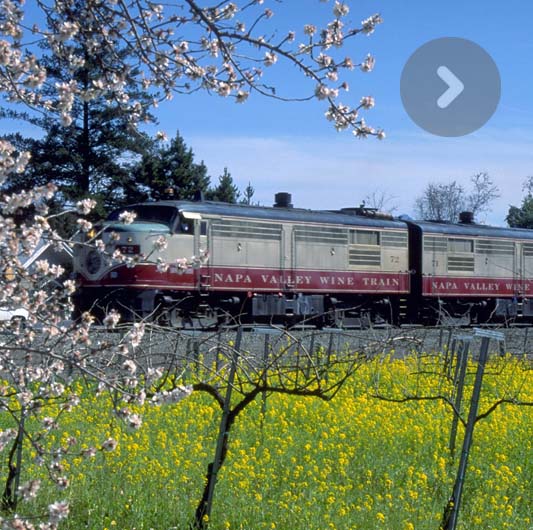Bages
Prestigious estates, a luxury hotel with a 2-starred Michelin restaurant and tasting school, the “Cercle Lynch Bages”… Jean-Michel Cazes bought back and renovates the derelict buildings and boutiques from his childhood. Thus, brought back to life, the Bages Hamlet is now one of the most visited destinations in the Médoc region. Jean-Michel is a true pioneer of refined wine tourism to which he brings a lifestyle element. He was even awarded a prize for it by the “Revue des Vins de France” in January 2011.
The “Café Lavinal” (named in remembrance of his great grandmother) is a great spot for lunch, with its retro moleskine décor, zinc bar, chalk board menu and wine by the glass. For a stylish dinner, go to the Cordeillan Bage Michelin Relais et Châteaux restaurant, where the chef Jean-Luc Rocha, awarded the prestigious commendation of “Meilleur Ouvrier de France”, has just taken over from Thierry Marx.
The “Baba d’Andréa”, an old fashioned bakery and the “Bages Bazaar”, a boutique where you’ll find a selection of attractive objects related to wine, come to complete the renaissance of the village of Bages.
The Château Lynch Bages estate produces a fine Pauillac opulent and elegant in taste and a personal favourite of former Russian president Gorbatchev. Sylvie Cazes follows in the footsteps of Jean-Charles and Jean-Michel.. and promotes her Grand Crus Classés. The estate, with its sixteenth century cellar and outbuildings, should be visited such a museum. Visits and tastings can be arranged for a fee and are by appointment only. www.lynchbages.com
Saint-Estèphe
Saint-Estèphe, a wine, which, at first, develops coarse notes, then, with age, develops rounded and fruitier notes with a surprisingly great fineness.
After Pauillac, one reaches the “cos” or small hills that carry the Saint-Estèphe designation, such as the Cos d’Estournel, the Cos Labory and Phélan Ségur, places steeped in Irish history.
Château Cos d’Estournel. Is a curiosity with Asian-inspired pagodas, a heavy sculpted wooden door and palm trees that would look more at home in a riad in Marrakech, all seemingly far removed from the traditional chartreuse houses but that produces superb and authentic Saint Estèphe.www.estournel.com
An artisan vintage: Château la Peyre www.mesvignes.com
Listrac in Medoc
Listrac, a ruby coloured wine, which reveals an initial freshness, followed by coarser notes with aromas of fruit. Very interesting.
Château Fourcas Hosten. Four châteaux came together in Listrac to offer visitors a recreational approach to their wines. Nicknames the “Listrac Quatuor”, these wine growers organise discovery workshops around vines and vinification. These include the Fourcas, Dupré, Fonréaud and Lestage Châteaux. Bookings can be made via Pauillac’s Tourism Board. Tel.: +33 (0)5 56 59 03 08.
Moulis in Médoc
Moulis, is a small appellation, rich in fineness and generosity, one for the connoisseurs.
Château Duplessis. According to the legend, this seventeenth century hunting lodge belonged to Armand Duplessis, nephew of the Cardinal of Richelieu. Today, it is owned by Marie-Laure Lurton, classified and reconverted as a Médoc Cru Bourgeois, with the integrated farming “terra Vitis” label since the 2003 vintage. www.marielaurelurton.com
Saint julien
Saint-Julien, a wine with a velvet robe and amber highlights, which brings out suave and exquisitely mellow touches with age. An elixir!
The municipality with the most titles – 11 classified vintages and 25 estates!

Château Léoville Barton. A great lady and some great wines: Lilian Barton descends from one of the oldest families in the Médoc region whose history is tied to Ireland. Her ancestor, Thomas Barton, established himself as a trader in the Bordeaux region in 1722, becoming a wine merchant and taking ownership of the Château de Léoville, archetype of the region’s eighteenth century style with a park and a French formal garden, surrounded by vines. Exceptional vintages, whose wines are classified as vintage years since 1900, the Château Léoville Barton’s wine is one for aging. They also produce a premier wine, the Réserve Léoville Barton. Free visits by appointment. www.leoville-barton.com
Château Lagrange, smart and zen. The Japanese firm Suntory took ownership of this magnificent eighteenth century Chartreuse house and its vineyard. A classified Grand Cru, its premier wine is a the Château Lagrange, its secondary wine is the Les Fiefs de Lagrange, and they also run a small production of Bordeaux blanc sec denominated white wine, a blend of Sauvignon, Sémillion and Muscadelle grapes. Visits are by appointment and include the tasting of three wines as well as the possibility of dining at the château. www.chateau-lagrange.com
Saint-Julien-Beychevelle
Château Beychevelle. This name signifies «dropping one’s sail», from the time when passing boats would have to drop their sails in a sign of allegiance to the powerful Duke of Epernon who owned the château. A splendid Chartreuse building from the eighteenth and nineteenth centuries is one of the jewels in the Médoc’s crown with gardens that run down to the estuary. Access to the wine store which holds the fourth classified Saint-Julien vintage can be organised by appointment. www.beychevelle.com
Château Saint-Pierre. The former estate of the Baron of Saint-Pierre, is now in the hands of Jean-Louis Triaud, the president of the Girondins of Bordeaux. A fourth classified Saint-Julien cru, including the excellent silky, pure and fleshy 2000 vintage. chateau-saint-pierre.com
Château Talbot. A superb domain that cannot be ignored and originally belonged to an Englishman, the constable of Talbot, governor of Guyenne. It is owned today by two ladies, descendants from the Cordiers family. A sea of vines covering 107 hectares and a Saint-Julien classified grand cru, with a white cru Caillou, aged in the Burgundy tradition, from Sauvignon grapes with a touch of Sémillon. www.chateau-talbot.com
Château Capdet, another chapel to be discovered. Tel.: +33 (0)5 56 58 03 19.
Saint Yzans de Médoc
Médoc is round and distinctive, with a delicate taste when it’s young, that intensifies with age and maintains a good balance. No false notes.
Castel Loudenne
Château Loudenne is a place that is full of inspiration and charm with a grand nineteenth century Chartreuse house, with outbuildings that house the Museum of Vine and Wine Tool craft. Named the Pink Château after its colour and rosaries; its park runs along the estuary down to the private port with a beautiful view of the Gironde. The estate, which is owned by Florence Lafragette, who grew up in the Médoc region, encompasses 132 hectares of vines and produces red, white and rosé wine: Château Loudenne Médoc cru bourgeois, Château Loudenne Bordeaux blanc, and the “Pink”, an astonishing rosé. A new addition, the Trois rives de Loudenne, a wine that blends the land’s Graves with the softness of the sea and the estuary. Visits and tastings by appointment as well as oenology workshops, grape-picking and horse rides. Bed & Breakfast at the Château. 183 Loudenne 33340 Saint-Yzans-de-Médoc www.lafragette.com
Ludon Médoc
Château La Lagune. The estate belongs to Caroline Frey, a trained oenologist, passionate about her trade, and produces a third Médoc classified grand cru. The eighteenth century Chartreuse house was carefully restored and Caroline takes reservations for meals on the estates. www.chateau-lalagune.com
La Maréchale
The authentic and bucolic fishing village where plaice is lined up along the embankments.
Soussans
In an area dedicated to the art of wine, to discover two artist painters and ceramists, Mrs Barraud and Parrage. 1 route du Port. Visits of the workshop by appointment. Tel: +33 (0)5 57 88 35 71.
Saint Christoly
For a fish lunch at the Maison du Douanier with its lovely view over the road that runs along the estuary all the way to the Domaine de la Tour de By. Tel.: +33 (0)5 56 41 35 25.
Bédagan
Château de la Tour de By, in memory of the Father. The family estate is atypical. The tower, built from an old lighthouse from 1825, dominates the 75 hectares of vineyards boasting some of the best grape varieties. An exceptional vintage, a superior Prestige Grand Cru bourgeois. Visits, tastings and walks in the vineyards. www.la-tour-de-by.com
Lesparre

Château Chantelys-Lesparre. An estate belonging to Christine Courrian, a woman wine-grower who produces a cru bourgeois as generous as her hospitality. Every year, Christine invites about 30 people to take part in convivial grape-picking activities on her 16 hectare estate. The “vendanges” are a great therapy for city folks from all over the place and all different nationalities. www.chantelys.fr
Site archéologique de Brion
Set back from the water through the reeds, where they fish for lamprey and shad using traditional methods.
Pointe de Grave
Located the mouth of the Gironde, to admire the Cordouan lighthouse, erected under Louis XIV. It is considered to be the most beautiful in France and is still inhabited to this day. It is a listed Historical Monument, in the same way as Notre Dame in Paris.









